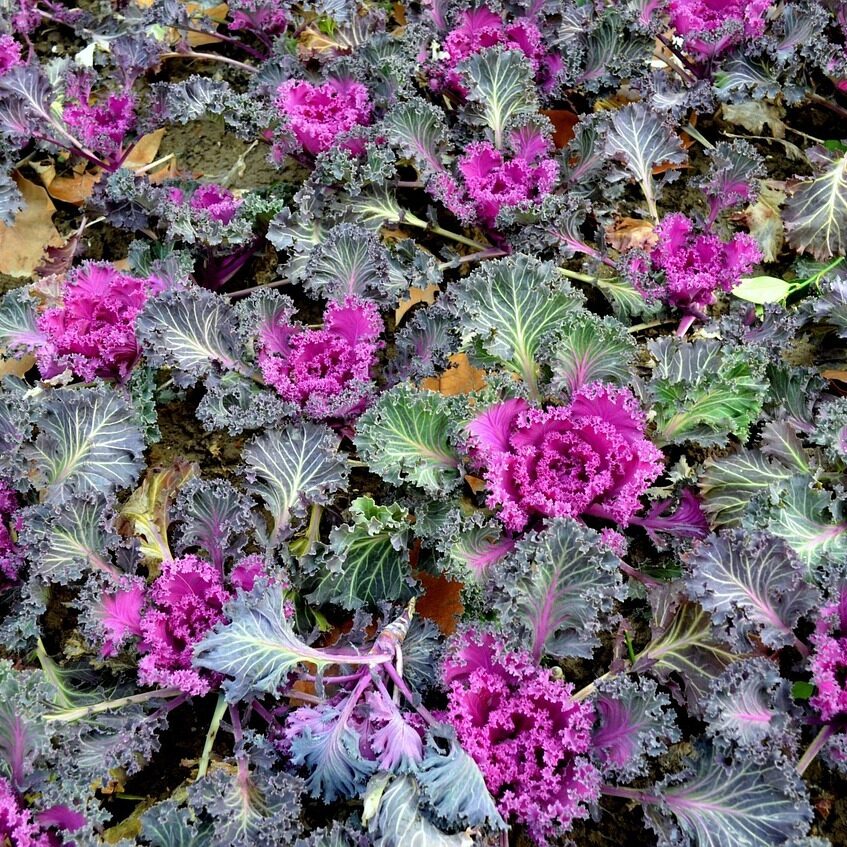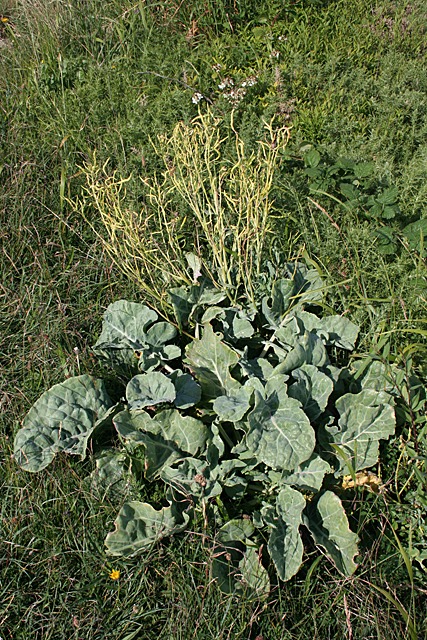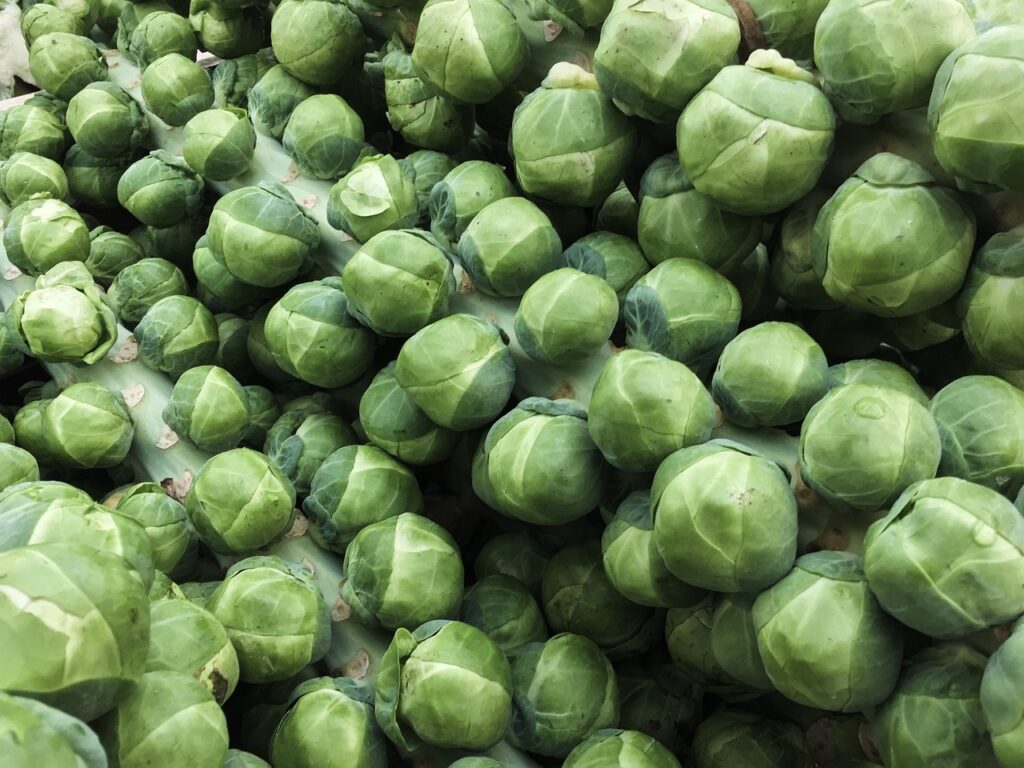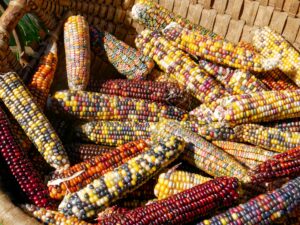
In stories of wizards and witches, transfiguration is described as the magic of turning one object into another. With the wave of a wand, a magician can turn a teacup into a hedgehog, a rabbit into a hat, or a human into a cat.
Here in the real world, transfiguration remains impossible—mostly. One plant species seems to have the magical ability to transform into a bewildering variety of forms and shapes. You may have enjoyed one of these forms for dinner last night. You may be growing another in your flowerbeds.
Brassica oleracea isn’t magic, but it may be as close as we muggles can get.
Ornamental cabbages and kales
Let’s start with the form of Brassica oleracea that is popping up in flowerbeds and garden centers across North Texas: Ornamental cabbages and kales. Gardeners eager to brighten their flowerbeds through a Texas winter often turn to these widely available annuals.
“Ornamental cabbages and kales are ideal in the winter garden for their hardiness and color variety,” says Sr. Horticulturist Steve Huddleston. “They provide shots of color that range from hot pink and rich purple to cool blue-green and creamy white.”
Ornamental cabbages form big round heads with a rosette of large leaves. Ornamental kales have frilly leaves; some cultivars form heads, while others sprawl outward and still others grow upward like small shrubs.
Both plants grow well at temperatures between 45 and 75 degrees F and are therefore ideal for North Texas winters. “They can generally tolerate freezes as low as the teens, but for extended or particularly low temperatures, they should be covered with some type of frost cloth,” says Huddleston.

cc-by-sa/2.0 –
© Anne Burgess – geograph.org.uk/p/4086343
Plant in full sun to light shade. Keep soils moist during dry spells. The plants will benefit from a high-nitrogen fertilizer in December. They tolerate a wide variety of soils and do particularly well in containers.
As spring rolls around and temperatures start to rise, the plants will start to elongate and develop cones in the middle. They might even bloom. “At this point, we say the plant has ‘bolted’ and begun producing seeds,” says Huddleston. “It means it’s time to remove and replace the plant.”
The shape-shifter of the domestic garden
Despite their wide variety of shapes and colors, both ornamental cabbages and kales are classified as members of the Brassica oleracea species. Just like the cultivars grown for food, ornamental cabbages and kales can be eaten, but they tend to be less flavorful than culinary varieties and more bitter. Probably they would be better used as a garnish than a dish.
Cabbage and kale, both the ornamental and culinary varieties, are only the beginning of the edible wonders of Brassica oleracea. Other members of the same species include:
- Broccoli
- Cauliflower
- Brussel sprouts
- Collard greens
- Savoy cabbage
- Kohlrabi

All of these plants descend from wild cabbage, a plant native to coastal southern and western Europe. Over many centuries, gardeners cultivated numerous varieties of Brassica oleracea. Those who focused on growing plants with large leaves developed kale by the fifth century BC. A preference for tightly bunched leaves in a single head led to the development of cabbage around the first century AD. Farmers who selected plants with enlarged flowering structures created cauliflower and broccoli by the 12th or 13th century AD.
On and on it went, with different gardeners in different regions developing cultivars that grew well in their climate and tasted good. If you enjoy roasted Brussels sprouts, thank 13th-century farmers in what is today the Netherlands and Belgium who developed a variety of Brassica oleracea with numerous small, tightly packed heads on a stalk.
Brassica oleracea is remarkable for its variety, but it comes from a whole family of shape-shifters. The plant belongs to a family of magicians, Brassicaceae. Other species in the family include:
- Brassica rapa, which includes turnips, bok choy and rapeseed (the seed used to produce canola oil);
- Raphanus, which includes radishes; and
- Eruca vesicaria, known in the U.S. as arugula.
One Brassicaceae species, Isatis tinctoria, was used to produce the dye indigo. Several others are popular ornamental plants including Alyssum, Lunaria, and Iberis (commonly known as candytuft.)
As you add a shot of color to your winter garden with ornamental cabbages and kales, remember that you are working your own type of magic with the help of a master of transfiguration, that wizard of horticulture, Brassica oleracea.






